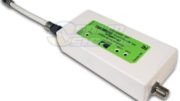In 2015, I wrote a little story about device drivers. Here’s what it looked like.
Everyone hates them. Device drivers are like cockroaches; you can’t get rid of them. Every time you turn around, you need to update them, and sometimes they bring nasty little surprises. Just the other day a routine device driver update turned into a 45-minute odyssey of uninstalling and restoring when it killed my wireless connection.
Just about everything has device drivers, too. You may be unaware of them, but almost everything with a computer chip in it runs a very basic and generic operating system, paired with a driver that lets it actually operate. It’s not enough that your computer needs a driver to make it work with your printer — your printer actually needs a driver to work with your computer. What a mess, right?
A mess, but a necessary mess
Except, drivers are a very elegant solution to a very complex problem (when they work.) You see, it’s practically impossible to build something like a printer or even a washing machine from scratch in today’s world. The timeframes are just too tight. So, manufacturers use general-purpose chips to handle the basic tasks of turning the thing on, displaying words or numbers, or managing power. There’s also an operating system that controls communication between all the parts. All that’s needed is a way to tell the operating system what to do and how to do it. That, dear readers, is a device driver.
In the distant past of computers, you could only use printers that a computer could talk to without any installation. They had to work with specific, very boring standards. The idea that you could actually upgrade the computer in a very ordered, very structured way with new software to run new devices was a real boon to developers in the 1990s who struggled with ways to introduce new features.
Today, we don’t think too much about device drivers because they tend to work a lot better than they used to… but there’s still some potential for chaos, as I found out.
Are things better in 2020?
I’m tempted to say, no they are not. The most recent update to Windows 10 breaks the operating system’s ability to print. The culprit was very likely old and bad device drivers. There are still a lot of companies out there who don’t follow all the guidelines for Windows 10 device drivers. They still choose to install a lot of their own software instead of relying on Windows for a lot of the basic stuff.
But, as a society we are less worried about PC device drivers than we were. We’re far more reliant on our phones than we were five years ago. Our phones have device drivers too, but they’re generally built by the manufacturer and not some third party as is the case with PCs. There are some cases where additional drivers or software becomes obsolete, but it’s rare.
There’s another issue with device drivers on phones, though. The manufacturer device drivers are a big part of why a lot of phones never get an OS update. If you have an iPhone you’re spoiled; pretty much every phone made in the last five years is still capable of getting free OS updates. Androids don’t fare so well. Many phones never get an OS update and those that do get them later than new phones which come with a new OS.
So yes, I will say on balance that device drivers are still with us, still part of makes our stuff work, and really, still a big problem.





